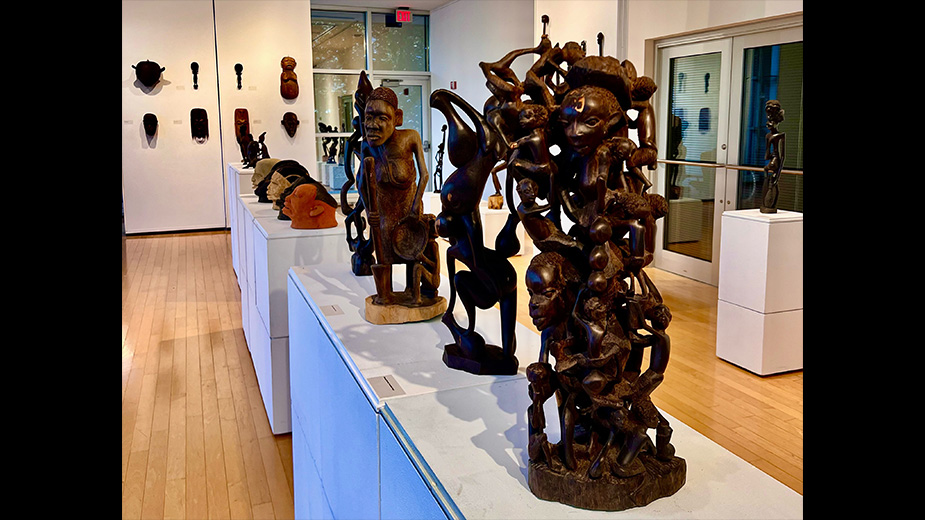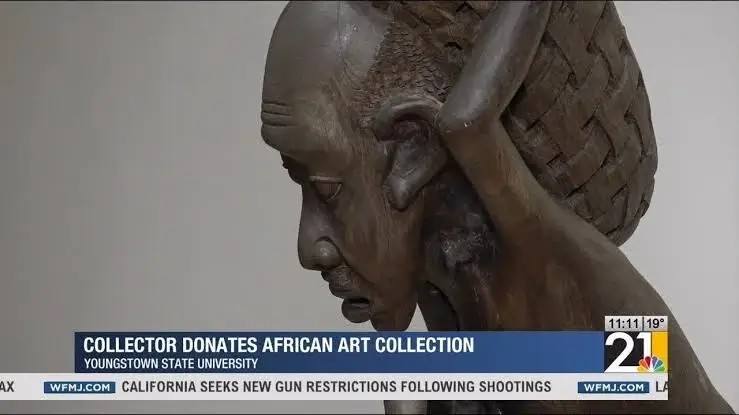February first is not only known as a month of love, it also marks the time for recognising the central roles of Black people. To mark this annual celebration, Youngtown State University kicked off with an exhibition of Makonde sculptures from the collection of Tazim and Dr. Nazim Jaffer.

According to Google Arts and Culture, The Makonde originate from Southern Tanzania, and Northern Mozambique. They are renowned for their prowess in wood carving. Their elaborate masks and figurines recount generational stories. And they are also known for their expressive facial tattoos.
Makonde sculptors are blatantly expressive; when representing their people, they create harmonic sculptures with fine features, while their enemies are represented with distorted and ridiculous features that look grotesque. The Ujamaa style has its origin in this kind of carving. It represents a Makonde family tree, featuring streams of people engaged in daily activities. It is all carved out of a single piece of wood. A female figure always stands at the top.
Tazim Jaffer is a Youngstown-based artist and visual anthropologist of Indian heritage, born in Tanzania. As a visual anthropologist, she has received numerous grants to research life-cycle rituals and women’s economic empowerment from African, East Indian, South Asian and Pacific Island cultures.
A significant aspect of her studies has focused primarily on Makonde wood carvings that have been marginalized in the United States and the Western world. She states that the characterization of Makonde wood sculpture as “tourist art” is inaccurate because the “traditional” aspect of Makonde sculpture is an authentic art form embedded with unique aesthetic qualities and socio-religious content.
Tazim has shown her work in solo, invitational, group and juried exhibitions nationally and internationally for the past 40 years.
This is the first year the collector is donating the artwork back to the university and it’s a collection she accumulated for 7 decades. Tazim started this collection in the 1950s and collected most of the pieces in the 60s and 70s.

Jaffer studies life-cycle rituals and women’s economic empowerment from African, East Indian, South Asian, and Pacific Island cultures. On Wednesday, she presented her knowledge of the Makonde art to a room full of learners at YSU’s McDonough Museum of Art.
“She claims that Makonde sculpture has been underrepresented because it’s assumed it is tourist art rather than functional art,” Adu-Poku said. “Her responsibility was to showcase the importance of Makonde sculpture to the Western world, especially to America.”
“I don’t think there is enough exposure to different ethnic groups,” Jaffer added. “Maybe they see more of Western and Central African art but this is entirely Makonde art.”
The exhibit is free to guests and goes until February 23rd. The items will then move to the anthropology, art history, and African American studies departments.
Watch video here


